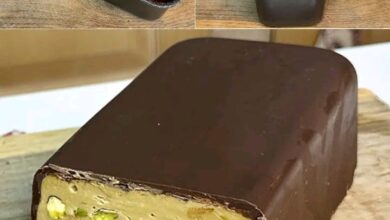The Marvelous Clove

Here is a full breakdown for “The Marvelous Clove”, covering everything from its origins to health-conscious uses — perfect for a blog, educational post, or recipe feature.
—
🌿
—
Introduction and Origin
Cloves are the dried flower buds of the Syzygium aromaticum tree, native to the Maluku Islands (also known as the Spice Islands) in Indonesia. Known for their warm, sweet, and slightly bitter flavor, cloves have been treasured for centuries — once worth more than gold in medieval Europe due to their use in medicine, cooking, and perfumery. Their powerful aroma and taste make them a staple in cuisines around the world, from Indian biryanis to European mulled wine.
—
Cultural Significance
Cloves have played a crucial role across many cultures:
Traditional Chinese Medicine used cloves as early as 200 BCE for digestive health.
Ayurveda praises cloves for their warming properties and ability to balance Kapha and Vata doshas.
In Middle Eastern and African cultures, cloves are found in spice blends like Ras el Hanout and are used in teas and stews.
In Europe, cloves are a signature spice in winter desserts and Christmas drinks.
Historically, cloves were also chewed for fresh breath — even Chinese emperors expected courtiers to do so before an audience.
—
Ingredients Quantity (For Culinary Use in a Standard Recipe)
Here’s a basic guideline for using cloves in cooking:
Whole cloves: 2–6 per dish (too many can overpower)
Ground cloves: 1/8 to 1/4 teaspoon (use sparingly)
Clove oil (culinary-grade): 1 drop per large batch (very concentrated)
—
Optional Additions (Complementary Spices & Ingredients)
Cloves pair beautifully with:
Cinnamon
Nutmeg
Cardamom
Star anise
Allspice
Citrus zest
Vanilla
Ginger
These combinations are common in chai tea, pumpkin spice blends, and aromatic rice dishes.
—
Tips for Success
1. Use Sparingly: Clove’s intense flavor can overwhelm if overused.
2. Toast Whole Cloves: Briefly toast in a dry pan to enhance aroma before grinding.
3. Grind Fresh: For the most potent flavor, grind whole cloves just before use.
4. Storage Matters: Keep in an airtight container away from light and heat; they can lose potency over time.
5. Balance is Key: Always use cloves as part of a spice symphony — not the solo act unless you’re aiming for clove tea or specific flavor dominance.
—
Instructions (For Making Clove Tea — a Simple Daily Use)
Ingredients:
3–4 whole cloves
1½ cups water
Optional: honey, lemon, cinnamon stick
Steps:
1. Boil the water in a small saucepan.
2. Add cloves and reduce to a simmer for 5–7 minutes.
3. Strain into a cup.
4. Add honey or lemon if desired. Serve warm.
This tea is soothing for digestion and sore throats.
—
Description
Clove offers a strong, pungent aroma with sweet, peppery, and slightly bitter undertones. It warms the palate and leaves a lingering, almost numbing sensation when used in larger amounts. Whole cloves provide bursts of flavor in slow-cooked dishes, while ground cloves seamlessly blend into spice mixes and batters.
—
Nutritional Information (Per 1 teaspoon ground cloves)
Calories: 6 kcal
Fiber: 1.2 g
Vitamin K: 12% of daily value
Manganese: 55% of daily value
Antioxidants: High (contains eugenol, a powerful anti-inflammatory)
Cloves are also mildly antimicrobial and aid in oral and digestive health.
—
Conclusion and Recommendation
The clove is small but mighty. Whether you’re looking to spice up a holiday dessert, brew a soothing tea, or incorporate natural wellness into your daily routine, cloves deliver. A dash goes a long way — so treat them as the aromatic gold they are.
—
Embracing Healthful Indulgence
Cloves are proof that indulgence doesn’t have to be unhealthy. Their richness enhances dishes and drinks, but they also offer health benefits — aiding digestion, easing inflammation, and even improving blood sugar control in some studies. Try replacing sugary flavors with spice in your recipes: add cloves to oatmeal, warm milk, or baked fruit for a satisfying, wellness-forward treat.
—
Would you like this content repackaged for social media (like a carousel or Instagram caption), or turned into an infographic?



